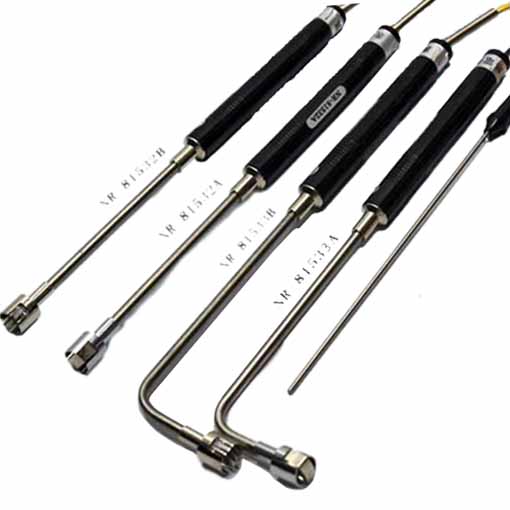Categorías de Producto
- fusible térmico 32
- fusibles de montaje en superficie 12
- termistor 36
- Portafusibles de montaje en PCB 27
- Arnés de cableado 6
- Portafusibles de cuchilla 17
- termostato 50
- Fusible eléctrico 24
- Sensor de temperatura automotriz 7
- Disyuntor térmico 22
- Portafusibles 36
- Sensor de temperatura 75
- Interruptor térmico 68
- Fusible del coche 20
- Fusibles atornillados 8
Etiquetas de productos
Clasificación de medición de temperatura de termopar
Sensores de termopar (Resistencia térmica blindada, Resistencia al platino, Metal precioso de alta temperatura (platino rodio) par termoeléctrico, Resistencia térmica anticorrosión, Resistencia térmica de la cara final, Sensores de termopar de central eléctrica, Termopar de canal caliente) es una especie de elemento sensor de temperatura. El termopar mide directamente la temperatura.. Dos componentes diferentes de un material conductor compuestos por un bucle cerrado.. Debido a diferentes materiales, diferentes densidades de electrones producen difusión de electrones, y se genera un potencial eléctrico después del equilibrio estable. Cuando hay un gradiente de temperatura en ambos extremos., se generará una corriente en el bucle, generando fuerza termoelectromotriz. Cuanto mayor sea la diferencia de temperatura, cuanto mayor sea la corriente. El valor de la temperatura se puede conocer después de medir la fuerza termoelectromotriz.. Un sensor de termopar es en realidad un convertidor de energía que convierte la energía térmica en energía eléctrica..
Las ventajas técnicas de los sensores termopares.: el termopar tiene un amplio rango de medición de temperatura, y su rendimiento es relativamente estable. La precisión de la medición es alta., el termopar está en contacto directo con el objeto medido, y no se ve afectado por el medio intermedio. El tiempo de respuesta térmica es rápido., y el termopar responde de manera flexible a los cambios de temperatura. El rango de medición es grande., y el termopar puede medir la temperatura continuamente desde -40~+1600℃. El termopar tiene un rendimiento confiable y buena resistencia mecánica.. Larga vida útil e instalación cómoda.
El par galvánico debe estar compuesto por dos conductores. (o semiconductor) Materiales con diferentes propiedades pero que cumplen ciertos requisitos para formar un bucle.. Debe haber una diferencia de temperatura entre el terminal de medición y el terminal de referencia del termopar..
Los conductores o semiconductores A y B de dos materiales diferentes están soldados entre sí para formar un circuito cerrado.. Cuando hay una diferencia de temperatura entre los dos puntos de fijación 1 y 2 de los conductores A y B, Se genera una fuerza electromotriz entre los dos., entonces se forma una corriente de una magnitud en el bucle. Este fenómeno se llama efecto termoeléctrico.. Termopar es la aplicación de este efecto al trabajo..
El termopar es en realidad una especie de convertidor de energía.. Convierte la energía térmica en energía eléctrica., y utiliza el potencial termoeléctrico generado para medir la temperatura.. Para el potencial termoeléctrico de un termopar, Se debe prestar atención a las siguientes cuestiones. :
1. El potencial termoeléctrico de un termopar es la diferencia entre las funciones de temperatura de los dos extremos del termopar., no la diferencia de temperatura entre los extremos frío y de trabajo del termopar.
2. El tamaño del potencial termoeléctrico generado por el termopar.. Cuando el material del termopar es uniforme, no tiene nada que ver con la longitud y el diámetro del termopar, pero solo con la composición del material del termopar y la diferencia de temperatura entre los dos extremos.
3. Después de determinar la composición del material de los dos cables del termopar, El potencial termoeléctrico del termopar solo está relacionado con la diferencia de temperatura del termopar.. Si la temperatura de la unión fría del termopar permanece constante, El potencial termoeléctrico del termopar es solo un valor único en función de la temperatura de la unión de trabajo.. Suelde dos conductores o semiconductores A y B de diferentes materiales para formar un circuito cerrado., como se muestra en la figura. Cuando hay una diferencia de temperatura entre los dos puntos de fijación 1 y 2 de los conductores A y B, Se genera una fuerza electromotriz entre los dos., formando así una corriente de orden de magnitud en el bucle. Los termopares utilizan este efecto para funcionar..
Sonda de termómetro termopar de superficie portátil con mango recto, termopar de sonda delgada blindado rápido de alta temperatura

Mango recto La sonda del termocouple de la superficie de mano

Termopar de sonda delgada, rápido y de alta temperatura, blindado
Contáctenos
Esperando tu email, le responderemos dentro de 12 horas con la valiosa información que necesitabas.
 English
English Afrikaans
Afrikaans العربية
العربية বাংলা
বাংলা bosanski jezik
bosanski jezik Български
Български Català
Català 粤语
粤语 中文(简体)
中文(简体) 中文(漢字)
中文(漢字) Hrvatski
Hrvatski Čeština
Čeština Nederlands
Nederlands Eesti keel
Eesti keel Suomi
Suomi Français
Français Deutsch
Deutsch Ελληνικά
Ελληνικά हिन्दी; हिंदी
हिन्दी; हिंदी Magyar
Magyar Bahasa Indonesia
Bahasa Indonesia Italiano
Italiano 日本語
日本語 한국어
한국어 Latviešu valoda
Latviešu valoda Lietuvių kalba
Lietuvių kalba македонски јазик
македонски јазик Bahasa Melayu
Bahasa Melayu Norsk
Norsk پارسی
پارسی Polski
Polski Português
Português Română
Română Русский
Русский Cрпски језик
Cрпски језик Slovenčina
Slovenčina Slovenščina
Slovenščina Español
Español Svenska
Svenska ภาษาไทย
ภาษาไทย Türkçe
Türkçe Українська
Українська اردو
اردو Tiếng Việt
Tiếng Việt



